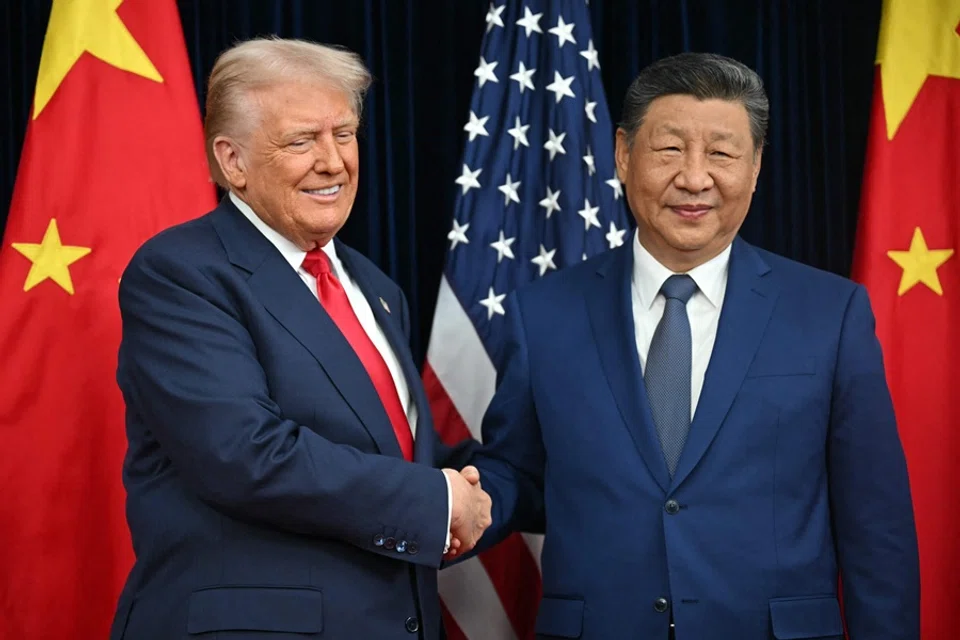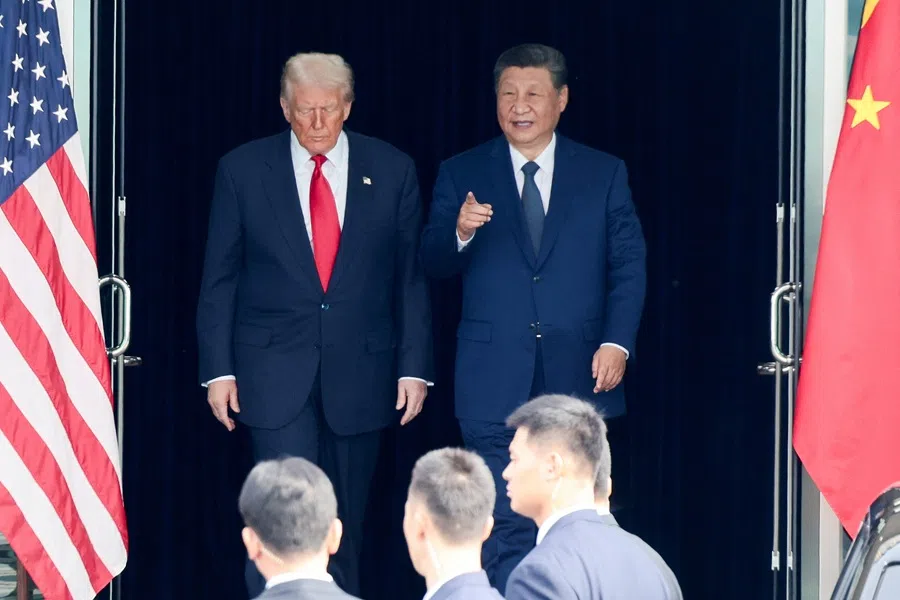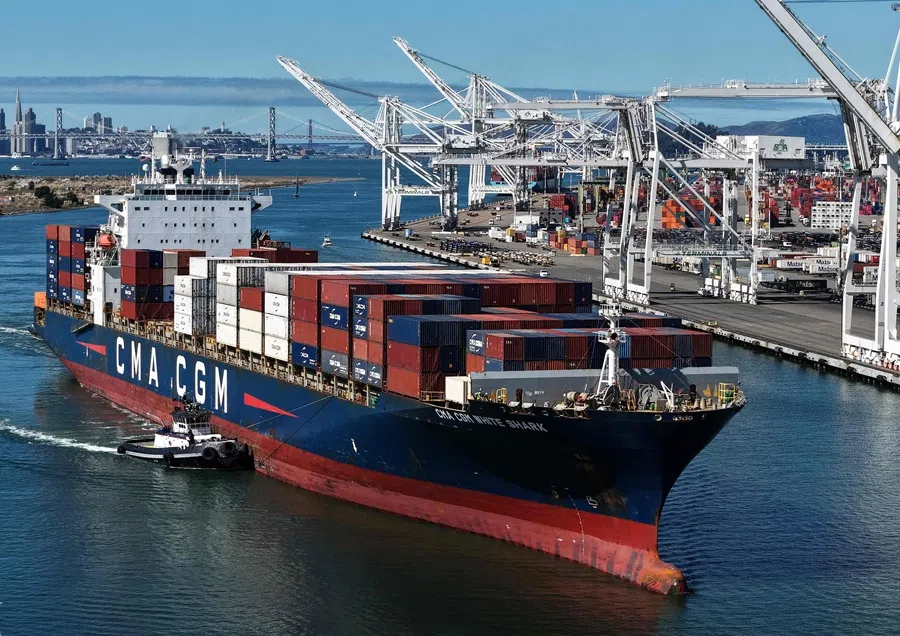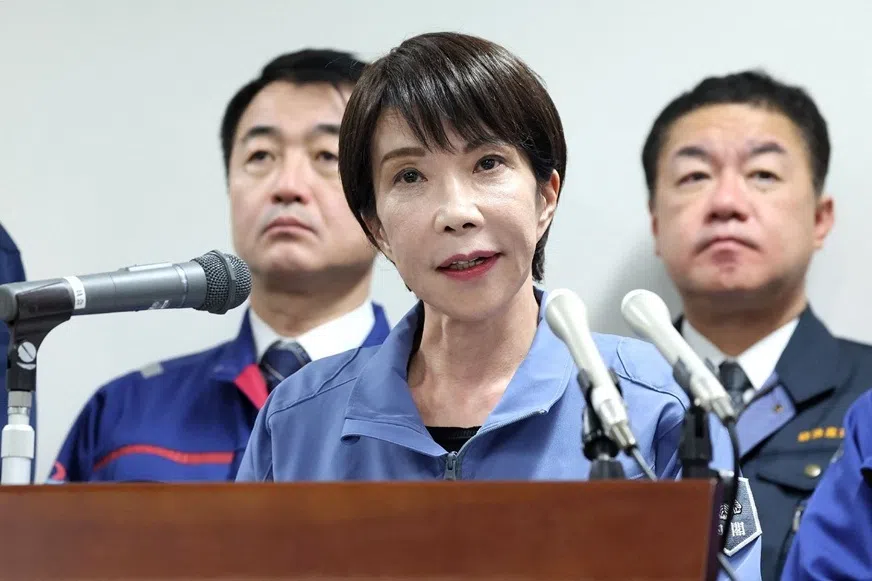Xi-Trump meeting: Has China won?
The long-awaited Xi–Trump meeting in Busan ended with smiles but few deals. Yet beneath the calm surface, China may have quietly emerged stronger — ready to play the long game in a shifting global order. Lianhe Zaobao associate editor Han Yong Hong gives her take.

The long-anticipated summit between the leaders of China and the US finally took place on 30 October in Busan, South Korea, as Chinese President Xi Jinping and US President Donald Trump met with their teams for a 100-minute-long discussion. Although the atmosphere seemed pleasant, no concrete agreements were reached, and neither side issued an official press release, while Trump quickly boarded Air Force One and returned to the US.
Despite Trump’s boast that the talks were “amazing” and that he would rate them 12 out of 10, the clear outcomes of the summit appeared to be the agreements reached by the two countries’ trade negotiation teams a few days earlier in Kuala Lumpur, Malaysia. After their face-to-face meeting in Busan, the US and Chinese leaders still did not sign a tangible agreement but rather “reached consensus on issues”. Asian stock markets closed lower from the previous day’s highs, under a wave of disappointment.
Greater consensus
Of course, from the discussions in Kuala Lumpur to the summit in Busan, the US and China managed to reach several points of agreement. For Beijing, the biggest gain was Washington’s decision to cut the so-called “fentanyl tariffs” by 10%. The US also agreed to suspend implementation of the “50% ownership rule” in its export controls for one year, while China will pause its export controls on rare earths. In addition, both sides agreed to suspend the imposition of special port fees on each other’s vessels for a year.
While most countries succumbed to Trump, China fought back with its own measures until its adversary agreed to a truce at the negotiating table.
Trump also claimed to the media that China would immediately purchase a “tremendous amount” of US soybeans and farm products, although this was not publicly confirmed by the Chinese side. Overall, this summit — which Trump described as beyond perfect — confirmed that the US would unilaterally reduce tariffs on Chinese goods by 10%, and both sides would temporarily halt several harsh measures against each other for a year. China’s “rare earth card” seems to have played a role here. As for the restrictions on Nvidia chips being exported to China, China’s stance was “we no longer want them”, and it need not be discussed.
In fact, on the eve of the Busan summit, CNN published an analysis: “Whatever the outcome, the Xi-Trump meeting is a win for China”.

CNN’s China correspondent wrote that the landmark Xi-Trump summit gave China a moment to showcase something Beijing has long sought: China standing as an equal to the US on the global stage. While Trump’s tariffs have posed challenges to Xi’s agenda of promoting China’s economic growth and technological development, they have also given Beijing the unintended gift of a bright spotlight under which to flex its economic strength. While most countries succumbed to Trump, China fought back with its own measures until its adversary agreed to a truce at the negotiating table.
China came out top?
The New York Times in its report on the Busan summit also hinted that it was clear who came out on top in the China-US power dynamic. The article was titled “The Art of Letting Trump Claim a Win, While Walking Away Stronger”, a nod to Trump’s book The Art of the Deal. A more direct Chinese phrase might be: “The art of letting Trump gain face, while logging substantial gains” (让特朗普赢面子,自己赢里子的艺术).
Likely out of frustration at what things could be, Western media have recently made similar assessments. The Economist opined last week that China is winning the trade war. Even Trump, when facing Xi, showed signs of admiration for strength — describing Xi as a “very tough negotiator” and praising him as a “tremendous leader of a very powerful country”. The phrase “a very powerful country” clearly carries great weight in Trump’s mind, further proving that China has chosen the right approach in its dealings with him: letting strength speak for itself.
Looking back, the Busan summit was Xi’s first meeting with Trump in six years. Over his 12 years as China’s head of state, Xi has already seen four changes in the US presidency. The American leader he met most frequently was Barack Obama, with at least eight meetings between 2013 and 2016.
China’s tougher stance this year stems not only from its belief that firmness is necessary and its growing confidence in wielding the “rare earths card”, but more importantly, from its decreasing reliance on the US market.

Back then, the gap between China and the US in areas such as the economy, technology, military strength and international influence was still obvious. By 2018, when Trump launched the trade war, China had retaliated tit for tat, yet was still unable to counter the US effectively. Today, the situation is indeed very different.
Tough stand from China
China’s tougher stance this year stems not only from its belief that firmness is necessary and its growing confidence in wielding the “rare earths card”, but more importantly, from its decreasing reliance on the US market. This shift, of course, is largely a result of Trump’s own policies.
Under the strain of high tariffs, China’s exports to the US have fallen, but it has managed to compensate for the shortfall by expanding exports to other regions. Economists estimate that China’s trade surplus this year will surpass last year’s record by a large margin, exceeding US$1 trillion, with the US now accounting for less than 10% of China’s total direct exports.
This is what underpins the potential use of China’s “rare earths card”: while the US market remains important, it no longer holds the significance it did before.
On 27 October, when Chinese Foreign Minister Wang Yi spoke with US Secretary of State Marco Rubio, he described Xi and Trump as “world-class leaders” — a Chinese way of expressing that China and the US now stand on equal footing.
The economic war between China and the US has only just begun, so the trade negotiations are far from over. As for any “grand bargain” involving Taiwan, that is still a long way off.

Trump’s version of the same sentiment was expressed in his signature style: before the summit, he declared on social media that “THE G2 WILL BE CONVENING SHORTLY!” — heralding the dawn of a “G2 era”. Some commentators described the Busan meeting as a G2 encounter; just that the purpose of their meeting was not to discuss cooperation, but to negotiate.
Although both leaders appeared relaxed and smiling, they knew full well that this was a contest between two increasingly evenly matched powers. The competition will be intense or even brutal, and whoever gains the upper hand this round may well find themselves losing the next.
The economic war between China and the US has only just begun, so the trade negotiations are far from over. As for any “grand bargain” involving Taiwan, that is still a long way off.
This article was first published in Lianhe Zaobao as “中美走入“强强对决”阶段”.



![[Big read] Love is hard to find for millions of rural Chinese men](https://cassette.sphdigital.com.sg/image/thinkchina/16fb62fbcf055b710e38d7679f82264ad682ce8b45542008afeb14d369a94399)
![[Big read] China’s 10 trillion RMB debt clean-up falls short](https://cassette.sphdigital.com.sg/image/thinkchina/d08cfc72b13782693c25f2fcbf886fa7673723efca260881e7086211b082e66c)
